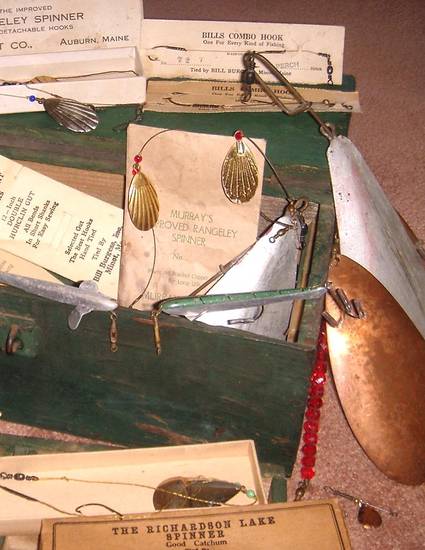
Book
2019 Revised Edition - History of Maine's Early Fishing Lures and Their Makers
(2019)
Abstract
There are numerous cottage industries associated with outdoor recreation in Maine, including the making of boats, canoes, guns, oars, paddles, snowshoes, sleds, and many types of fishing equipment (e.g., flies, lures, rods, reels, and nets). While the history of some of these items have been explored (e.g., early gun makers and bamboo fly-rod makers), the small-scale manufacturing of fishing lures in Maine has gone unstudied. Even the collectors of North American fishing lures, with a few exceptions (e.g., Dunlap Hook, Rangeley Spinner, and Stanley Aluminum Smelt), have over-looked the Pine Tree State. Based on a decade of research, this book brings to light the wide variety of fishing lures created in the Maine, and the lives of the people who invented, made, and sold these lures. The documented making of lures in Maine started with Ephraim L. Dunlap, a farmer who lived in the wilderness of western Maine. In 1875, Dunlap received a U.S. Patent for a hand-made, primitive-looking spring hook (i.e., fish trap). In addition to the Dunlap Spring Hook, Maine inventors patented 5 other pre-1930 fishing lures: the Stanley Aluminum Smelt (1895 and 1896 patents), (2) “Old Glory” fish and animal trap (1899), (3) Murray’s Aluminum Minnow (1910), (4) Kismet Casting Hook (1921), and (5) the Lucerne Lure (1927). The Stanley Aluminum Smelt is among the first, if not the first, aluminum fishing lure to be patented in the U.S.A.
More than a book for anglers, antique dealers, and fishing lure collectors, this work explores the history of lure making, one of the numerous cottage industries supporting Maine’s outdoor recreation economy. This book traces the lives of the people who designed, made, and sold the Pine Tree State’s early fishing lures. To cover both the lures and their makers, the book is organized into 11 chapters. The introduction gives an overview of the lure making industry in northern New England, including the types of lures made, how these lures moved from makers to anglers, and the years when individual lure manufacturers operated. Next, there are 7 chapters covering the major Maine lure makers, 1880 to late 1960s. These major makers were: Henry O. Stanley (b., 1828 – d., 1913), Fred E. Bailey (1854-1940), Charles H. Morse (1869-1931), William H. “Bill” Burgess (1886-1967), Richard W. Murray (1897-1969), John L. Murray (1899-1963), Clayton H. Hamilton (~1902-1994), and Leroy “Roy” M. Applegarth (1910-2000). Each chapter featuring major makers includes biographical information, a business overview, and a gallery of photographs. While the major manufacturers produced multiple products, there were also makers who produced only one lure; these makers and their products are covered in a separate chapter. The last two chapters of the book discusses factors affecting lure prices and the likelihood of finding specific lures, followed by a concluding chapter discussing changes and trends in Maine’s lure making industry. The book has 167 color illustrations and includes a detailed index to help readers locate information about individual makers and specific lures.
Keywords
- Maine fishing lures,
- Maine cottage,
- Maine outdoor sporting heritage,
- antique fishing lures
Disciplines
Publication Date
February, 2019
Citation Information
Krohn, William B., "History of Maine's Early Fishing Lures and Their Makers." 2019 Revised Edition. https://digitalcommons.library.umaine.edu
